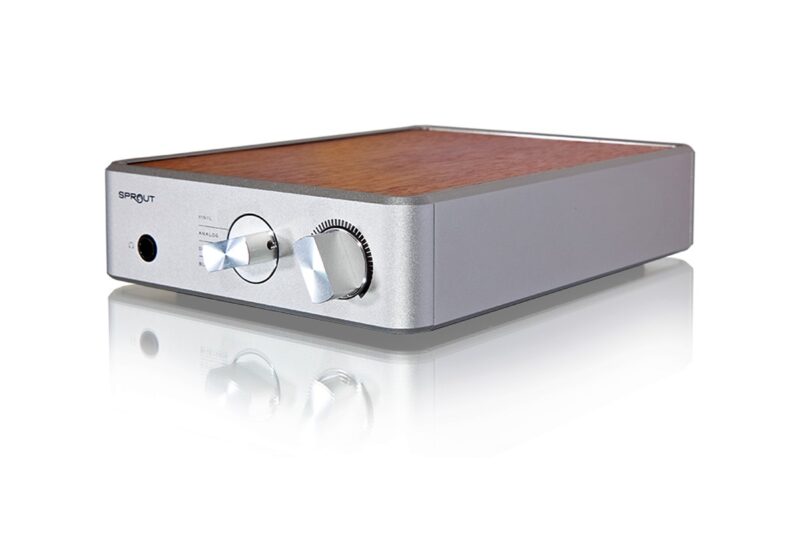A reader writes:
Would a music streamer, like Andover’s Audio Songbird Music Streamer, be necessary for a system with a PS Audio Sprout since the Sprout has Bluetooth?
Thanks
M.B.
Hello M.B,
Not necessarily. If you’re happy with the sound from Bluetooth, then you may not need a Wi-Fi streamer like the Songbird. However, since the Songbird uses Wi-Fi, it should technically sound better than Bluetooth since it streams over a higher bandwidth (Mbps vs. Kbps).
That said, Bluetooth has come a long way, and as I have said in many a review, there are quite a few integrated amps that have great sounding BT inputs. The PS Audio Sprout100 (read our review here) specifically, since it’s compatible with the aptX codec, can provide a “CD-like” sound.
I say “CD-like” because aptX uses lossy compression (removing select sound information to reduce data size) to send the rough equivalent of CD resolution (16-bit/44kHz) over Bluetooth’s limited bandwidth.
Keep in mind that this only works with Android devices that are aptX compatible; otherwise, you will be using the standard SBC codec, which doesn’t sound as good to me.
This also applies to all iPhone users since iOS isn’t compatible with aptX and depends on AAC as a premium Bluetooth codec.
It’s worth noting that the PS Audio Sprout is not compatible with AAC. So if you’re using an iPhone, you won’t get the highest Bluetooth data rates it’s capable of.
Then again, data rates are not the whole story. The way the Bluetooth receiver is implemented in the amplifier (DAC, Circuitry, etc.) also makes a difference. PS Audio did a good job with Bluetooth in the Sprout100 (incorporating its ESS DAC chip), so it does sound pretty good.
On the other hand, since the Andover Audio Songbird ($129) (our review here) is capable of lossless CD-Quality sound over Wi-Fi, it sounds better to my ear than any Bluetooth implementation I’ve heard on any amplifier (even though aptX HD amps like the CXA81 come close). However, to get stable lossless audio streams over Wi-Fi, a fast Wi-Fi plan is recommended, which may cost you depending on where you live.
That’s if fast internet is even available where you live. If not, then Bluetooth might be your best option.
Another thing to think about is the music source you will be using. If you are listening to Spotify or one of the other low bitrate music services out there, then Bluetooth may also be good enough since it has a data rate fast enough to transmit those sources in their full quality. On the other hand, if you’re using a streaming source like Tidal Hi-Fi or streaming local CD-Quality files with higher data rates, you may want to get a Wi-Fi streamer like the Songbird.
So at the end of the day, you need to decide if the Sprout100’s Bluetooth input sounds good enough for you. This will most likely depend on the device you are pairing with, the source of the music you are listening to, and if you have ready access to fast Wi-Fi. I recommend that you listen to the Bluetooth first and see if you are satisfied with it.
BTW, there’s another option. Since the Sprout100 has a USB input, you can also plug in a laptop and play music via software like Roon, Audirvana, or JRiver. All of them have remote apps so you can control the playback on the computer from your smartphone (needs Wi-Fi). The sound will also be better than the other options since the laptop will have a direct wired connection to the Sprout.
If you’re like me, however, you’ll probably want to pick up the Songbird and have the option of lossless audio without fussing with the computer all the time.
Have a question about 2-Channel audio? Especially Affordable High-End Audio? Then drop us a line! (Email, IG, or Facebook) You may see your question posted here on the site!
As an Amazon Associate, Hifitrends.com may earn from qualifying purchases via links placed throughout the site…this helps us keep the website going! Thanks in advance for your help! Prices are subject to change at any time.

I’m an audio writer who started as a young audio salesman/consumer electronics professional back in the late 90s. That’s where I discovered the magic of 2-Channel sound. My thirst for great sound has led me on a delightful music quest that continues today.



Leave a Reply